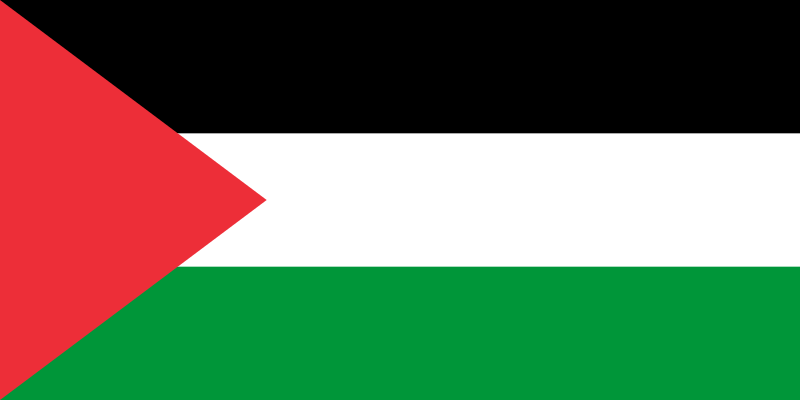
Flag of Palestine
The West Bank (Arabic: الضفة الغربية, aḍ-Ḍiffä l-Ġarbīyä, Hebrew: הגדה המערבית, HaGadah HaMa’aravit)[1] is a landlocked territory and is the eastern part of the Palestinian territories; on the west bank of the Jordan River in the Middle East. To the west, north, and south, the West Bank shares borders with the state of Israel. To the east, across the Jordan River, lies the country of Jordan. The West Bank also contains a significant coastline along the western bank of the Dead Sea. Since 1967, most of the West Bank has been under Israeli military occupation as what it calls the Judea and Samaria Area. A smaller part of the West Bank is administered by the Israeli civilian authorities as part of Jerusalem District.
Prior to the First World War, the area now known as the West Bank was under Ottoman rule as part of the province of Syria. At the 1920 San Remo conference, the victorious Allied powers allocated the area to the British Mandate of Palestine. Following World War II, United Nations passed the United Nations General Assembly Resolution 181 (II) Future Government of Palestine which aimed to establish a two-state solution within Palestine.
The territory known as the “West Bank” was originally part of the proposed Arabterritories, but following the Arab-Israeli War this area was captured by Trans-Jordan (renamed Jordan in 1949). The name “West Bank” was proposed by the Jordanian authorities to describe the area west of Jordan River. The 1949 Armistice Agreements defined its interim boundary. From 1948 until 1967, the area was under Jordanian rule, and Jordan did not officially relinquish its claim to the area until 1988. Jordan’s claim was never formally recognized by the international community, with the exception of the United Kingdom.
The West Bank was taken control of by Israel, during the Six-Day War in June, 1967. With the exception of East Jerusalem and the former Israeli – Jordanian no man’s land, the West Bank was not annexed by Israel.
Most of the residents are Arabs, although a large number of Israeli settlements have been built in the region since 1967. Close to 500,000 Israelis live in the West Bank settlements, annexed East Jerusalem and the former Israeli – Jordanian no man’s land areas. Although international law (Article 49 of the Fourth Geneva Convention) prohibits transfers of the population of an “occupying power” to occupied territories, media outlets often interpret the law to incur a responsibility on the part of Israel’s government to prevent Jews or non-Arab Israeli citizens from voluntarily residing in the West Bank, including cases where Israelis seek to restore Jewish communities destroyed by Arabs prior to Israel’s statehood, such as in Hebron and Gush Etzion.
The West Bank has a land area of 5,640 km2 (including East Jerusalem), and 220 km2 water (the northwest quarter of the Dead Sea). Its population is 2,514,845 (June 2010).

West Bank Governates Non Labeled
Notes from Wikipedia








